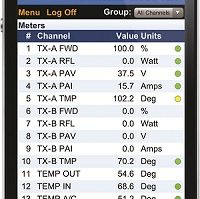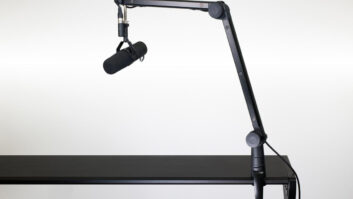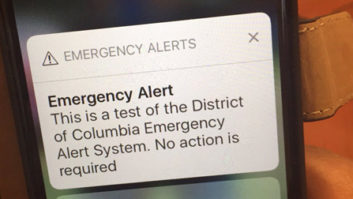WASHINGTON — Wireless mics will have no dedicated spectrum after next year’s incentive auction. The Federal Communications Commission delivered that verdict earlier this month when it announced that one channel in the television band would be set aside to be shared by wireless mics and white-space devices. Manufacturers and users of wireless mics lobbied to retain the two channels the FCC originally reserved in its 2010 Order that allowed unlicensed white-space devices to be used in TV spectrum. (See Wireless Mics Afforded Two Channels, Sept. 27, 2010.)
Those two channels were slowly absorbed by the Obama administration’s plan to clear 500 MHz of spectrum for wireless broadband, and the subsequent squeeze on television frequencies. TV Technology asked Sennheiser’s Joe Ciaudelli about the implications of wireless mics sharing a single channel with unlicensed white-space devices.
TV Technology: How many wireless mics does Sennheiser have working in the field in the United States on any given day?
Ciaudelli: A more relevant measure is how many citizens benefit from content or live events made possible by wireless microphones… hundreds of millions.
TV Technology: Is interference with other wireless devices a problem now? If so, has it become worse in recent years?
Ciaudelli: Wireless microphones have a stellar history of peaceful co-existence with primary services that share the same frequency bands, such as over-the-air TV broadcast and land mobile emergency communications. Wireless microphones have to work flawlessly without experiencing interruption or interference. Therefore, microphone operators proactively seek clear frequencies, which have the added benefit of preventing interference to the primary service using the same band.
Certainly frequency coordination became more challenging once wireless microphones lost access to 700 MHz five years ago, but manageable. White-space device deployment to date has been limited to a few hundred fixed devices. No personal portable white-space devices have been introduced. If they are, it is unrealistic to believe that consumers using them would proactively prevent interference in the same manner as wireless microphone operators do with their gear.
TV Technology: Why did Sennheiser and others go after two 6 MHz channels? Wouldn’t one be enough in most markets?
Ciaudelli: The definition of wireless microphones also includes in-ear monitor systems and interruptible foldback listening systems. Just like broadband has paired blocks for uplink and downlink with a guard band in between, it is best practice to have duplex audio in separate send and receive channels.
TV Technology: Wireless mics have to be retuned each time they get moved in the spectrum, correct? What does that involve?
Ciaudelli: High-end systems can be tuned. Standard systems often need to be scrapped. Either way it is costly and inconvenient for the microphone owner.
TV Technology: Is there any anecdotal evidence that white-space devices, I am now told there are fewer than 500, interfere with wireless mics? Have there been incidents?
Ciaudelli: Wireless microphone operators can navigate around fixed white-space devices. The potential threat is from portable white-space devices. No portables have been introduced into the market despite the FCC opening UHF to them five years ago.
TV Technology: What is Sennheiser’s confidence level in the FCC’s white-space database approach to preventing interference among white-space devices, mics and TV signals?
Ciaudelli: Although the problems of the white-space database system have been well documented, bugs will be worked out. The commission also envisions that the system will refresh faster in the future so that licensed microphone operators can reserve channels on short notice. However, this still does not adequately address breaking news, since its time and location are often completely spontaneous. Furthermore, spectrum sharing not only depends on the database system, but also on the proper operation of all the white-space devices that it governs. That poses a high risk for hyper-critcal microphones even for planned events.
TV Technology: How does Sennheiser suggest its clients move forward in a landscape where they share a channel with white-space devices?
Ciaudelli: If you qualify to be a licensed microphone operator, become one so that you can register your events for interference protection in the database. Regarding equipment, buy high quality gear with flexible RF tuning architecture from a company that also provides a high level of guidance and after sales support.
TV Technology










